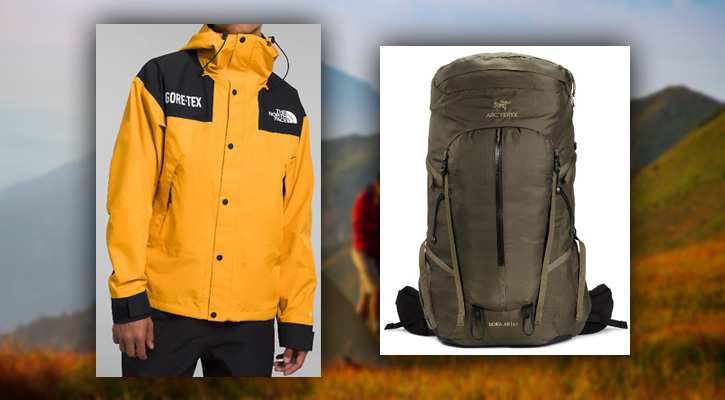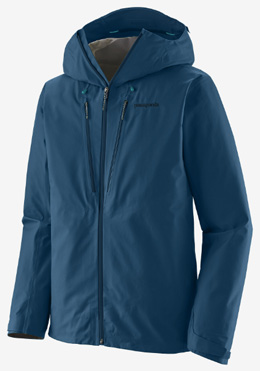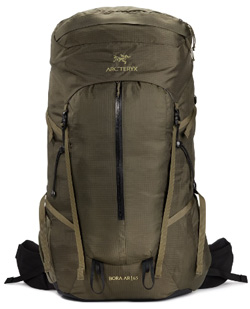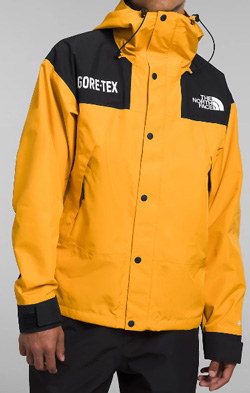
When you shop for outdoor gear, the price tags can be quite striking. Often, the cost of specialized tents, boots, and jackets runs high, leaving many to wonder what makes these items so much more expensive than their everyday counterparts.
The answer largely lies in the quality of the materials and the research that goes into their design.
Outdoor gear is crafted to withstand the elements and offer the highest level of performance in often harsh and unpredictable environments. Manufacturers use advanced technologies and premium materials that not only promise durability but also enhance comfort and safety.
This emphasis on high-quality standards justifies the higher prices associated with outdoor equipment.
Also, behind every piece of outdoor gear, is a considerable amount of research and development. From ergonomic design to weather resistance, these products undergo rigorous testing to ensure they meet the demands of outdoor enthusiasts.
It’s this combination of material excellence and design innovation that contributes to the cost of outdoor gear, making it a worthy investment for those passionate about their outdoor activities.
Let’s get down to the details!
1. Why is Outdoor Gear Expensive?
When you invest in outdoor gear, you pay for quality and durability. High-quality materials, like Gore-Tex or down insulation, offer enhanced performance but come at a greater cost. The research and development that goes into creating innovative gear sure to resist natural elements also inflate prices.
Manufacturers focus on sustainability practices, often using eco-friendly materials that are more expensive to source and produce. The intricate design and construction also matter, with additional features like seam-sealing and waterproofing being standard for ensuring safety and comfort in challenging conditions.
Another factor is the brand reputation and warranty. Established brands with positive track records often charge more, reflecting their historical commitment to satisfaction and reliability.
The cost is also driven by the specialized nature of the gear. Products designed for niche activities can be more costly due to their lower production volumes and the specific needs they address.
Lastly, safety standards and testing contribute to the overall cost. Rigorous testing ensures that the gear meets strict safety criteria, which is essential for equipment meant to withstand extreme conditions.
| Cost Factor | Reason for Cost |
|---|---|
| Materials | High-quality, durable, and often sustainably sourced |
| R&D | Innovation for peak performance in varied environments |
| Production | Specialized design and construction with additional features |
| Brand & Warranty | Reputation for reliability and coverage of defects |
| Market Niche | Products tailored for specific outdoor activities |
| Safety & Testing | Compliance with safety standards to ensure user protection |
Read also: 9 High-End, Expensive Hiking Brands for Clothing and Footwear

Patagonia Triolet Men’s Jacket: image patagonia.com
2. The Cost of Quality in Outdoor Gear
High-quality outdoor gear comes with significant investment in materials, technology, and design processes. Your purchase not only reflects the cost of physical components but also the brand’s reputation, market position, and the extensive research and development that goes into each product.
Materials and Technology
Top-tier outdoor gear utilizes advanced materials like Gore-Tex and recycled materials to provide you with durable and sustainable products. These materials ensure waterproofing and breathability, catering to the need for comfort and protection in varying conditions.
The incorporation of lightweight yet strong fabrics is critical in producing premium equipment. The use of cutting-edge technology is not just about creating gear that lasts, it also ensures a level of performance suited for a wide range of outdoor activities.
- Gore-Tex: A testament to technical innovation in waterproofing
- Recycled Materials: Addition of sustainability to quality and durability
- Durability: Uses resilient materials for longevity
Don’t miss: 8 Best Sustainable Outdoor Clothing Brands: Our Top Picks
Brand Reputation and Market Position
Your trust in brands like Patagonia, The North Face, or Arc’teryx is not misplaced. These manufacturers have cemented their market position through consistent delivery of high-quality gear. Their commitment to quality has generated a strong brand reputation, which adds to the cost of the products you buy.
As leaders in the market, these brands can charge higher prices not only for the gear’s physical attributes but also for the assurance of reliability and status they convey.
- Patagonia: Known for environmental commitment and high-quality gear
- The North Face: Synonymous with innovation and outdoor lifestyle
- Arc’teryx: Stands out for elite functionality and design
Research and Development
Behind every piece of your outdoor gear, there is extensive research and development (R&D). This R&D is the foundation of the innovations that ensure your gear meets the highest standards of quality and functionality.
Brands invest a significant amount of time and resources to study design optimizations, test new materials, and create prototypes. This continuous commitment to improving products affects the retail price, reflecting the behind-the-scenes work to deliver the best experience to you.
- Research: Critical for new materials and technology testing
- Development: Essential for the latest innovations in design
- Commitment to Quality: Drives the ongoing R&D efforts

Arc’teryx Bora 65 Men’s Backpack: image arcteryx.com
3. Design and Features for Outdoor Enthusiasts
Outdoor gear is designed to meet your specific needs in challenging environments, focusing on protection, comfort, and sustainability.
Specialized Equipment for Protection
Your safety is paramount when engaging with the rugged outdoors. Gear like helmets, goggles, and protective pads are designed to meet high safety standards. Jackets and apparel come with reinforced construction, offering durability against harsh conditions. For instance:
- Jackets: Look for options with abrasion-resistant fabrics and reinforced seams.
- Footwear: High-quality shoes are equipped with features like toe guards and ankle support for enhanced protection.
Performance and Comfort Enhancements
Performance and comfort are key in outdoor equipment, as they can make or break your experience. This gear often incorporates advanced technologies for improved functionality:
- Breathability and Insulation: Apparel such as down jackets and rain jackets use materials that keep you warm while allowing moisture to escape.
- Ergonomic Design: Backpacks and sleeping bags are tailored to distribute weight evenly, reducing strain on your body.
Features to consider include:
- Pockets: Strategically placed for ease of access and storage.
- Adjustability: Allows for a personalized and snug fit.
Sustainability and Manufacturing Processes
Sustainability in outdoor gear stems from ethical manufacturing processes and durable materials that extend the life of the products, reducing the need for frequent replacements. Here’s what to look for:
- Materials: Recycled fabrics and responsibly sourced down are common in eco-friendly gear.
- Manufacturing: Companies may employ processes that minimize water use and pollution.
Remember, sustainable construction not only benefits the environment but also often results in higher quality and more reliable gear for you.
Don’t miss: Why are Parkas so Expensive? Do You Really Need One?

The North Face Men’s GTX Mountain Jacket: image thenorthface.com
4. Economic Factors Influencing Gear Pricing
When you consider the high price tag of outdoor gear, it’s important to understand the economic factors at play, from manufacturing costs to consumer beliefs.
Supply Chain and Production Costs
The supply chain and production costs are critical components in the retail price of outdoor gear. Supply chain complexity can vary, leading to differing costs:
- Raw Materials: Quality materials, such as waterproof fabrics or durable metals, can be expensive.
- Labor: Skilled labor to craft the gear is a significant factor, with fair wages contributing to the cost.
- Manufacturing Processes: Advanced manufacturing processes for superior quality and durability add to the investment required.
- Transportation: Shipping raw materials and final products, often internationally, increases expenses.
Equipment longevity and the benefits of investing in top-tier gear justify higher prices for you as the consumer, but these also reflect the substantial costs manufacturers face when producing and distributing products.
Marketing and Consumer Perception
The interplay between marketing strategies and consumer perception greatly influences outdoor gear prices:
- Marketing: Costly campaigns are aimed at showcasing the value and technical advantages of the gear.
- High Investment in Branding: Strong branding drives demand, allowing companies to set higher prices.
Seasonality can impact market dynamics, where certain times of the year yield higher consumer spending on outdoor gear, leading to price fluctuations. Additionally, as a counterpoint to fast fashion, premium outdoor gear represents a long-term investment for you, which is reflected in the high price tag.
This perceived longevity and benefit, heavily reinforced by marketing efforts, solidify your willingness to pay more for perceived quality.
Read also: Why Are Hiking Jackets so Expensive?
5. Making Smart Purchasing Decisions
When investing in outdoor gear, your focus should be on purchasing decisions that balance cost with benefits, ensuring you get the most functionality for your money.
Assessing Cost Versus Benefit
When considering expensive outdoor gear, you need to weigh the benefits against the cost. High-cost items often offer better longevity and performance.
For instance, a high-end sleeping bag rated for low temperatures may represent a substantial investment initially, but its durability means it could serve its purpose for many seasons.
Below is a simple table to help you decide if a piece of gear is worth its price:
| Benefit | Item | Cost / Longevity |
|---|---|---|
| Warmth | Down Jacket | $$$ / 5+ years |
| Space | Backpacking Tent | $$$ / 3+ years |
| Comfort | Sleeping Bag | $$$ / 5+ years |
Identifying True Gear Needs
Understanding your specific needs is crucial when buying outdoor equipment. Instead of purchasing items for just one trip, consider the variety of parks and travel adventures you plan to undertake. Tools that serve multiple functions can save space and money.
Here’s a list of key points to identify if a gear item is a true need:
- Analyze your outdoor clothing: Does a jacket only keep you warm, or is it also waterproof?
- For sleeping equipment: Is it versatile enough for the temperatures you’ll encounter on various trips?
- Evaluate your backpacking tent: Is it suitable for the different terrains and seasons you’ll face?
Selecting gear with a clear understanding of your travel requirements helps prevent overspending on unnecessary items and ensures that your investment is wise and will be beneficial in the long run.
Read next: Why Are Puffer Jackets so Expensive?
